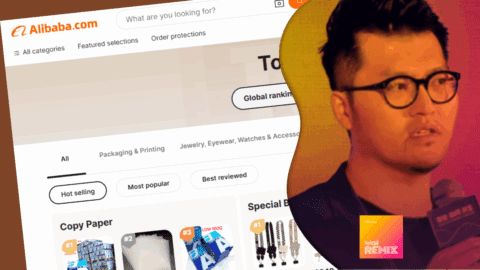This is Part 3 of the Retail TouchPoints series, titled: Retail-Supplier Collaboration: The New Operational Imperative. This article focuses on the supply-side position of retailer alliances and how store-level DRP is enhancing that relationship. Part 4, which concludes the series, will appear in the March 5 newsletter. Click here to view Part 1 and Part 2.
Analysts and merchants agree that retailer-supplier relationships are essential to streamlining supply chains and delivering more immediate product availability. But do suppliers concur? Are they ready and willing to value retailers’ needs and make necessary changes to better serve today’s want-it-now consumers?
At Nestlé Purina, the answer to these questions is “Yes!” Retail TouchPoints spoke with Donna Howard, Vice President and Managing Director, Customer Supply Chain for Nestlé Purina Pet Care Company, for a closer, representative look at the supply-side viewpoint retailer alliances.
Nestlé Purina looks to the collaboration partner ― the retailer ― to make operational adjustments that will strengthen supply chain partnership efficiencies. “For our collaboration effort to be successful, we seek three key factors from retailers, one of which is a willingness to make changes,” Howard said. The other two factors are: “a commitment in terms of time and resources from multiple levels within the organizations; and an alignment on objectives.”
Nestlé Purina has partnered with various retailers over the past few years on numerous supply chain initiatives, all with the primary retailer focus on improving the shopper experience, enhancing inventory productivity and reducing supply chain costs.
“One of the consistent benefits we find within our merchant relationships is the trust we build to foster a long-term collaborative environment that delivers sustainable solutions and process improvements that don’t end at the pet care aisle,” Howard reported. “We are able to recommend insights and changes that can be applied to all operations within the retailer’s distribution center or store, multiplying the cost-saving opportunities and providing retailers with a competitive advantage.”
However, from a vendor perspective, Howard said it can be difficult to gain the necessary commitment needed to move the initiatives forward. “Limited time and resources constrain the results vendors can deliver in a given amount of time. Additionally, the vendor community needs to recognize that retailers’ supply chains all work differently, and a cookie-cutter solution will not suffice for each one. Time and thorough analysis helps vendors make the appropriate recommendations and implement a solution.”
As Nestlé Purina moves into 2013 and embarks on new collaboration ventures, “we will become even more reliant on retailer data, and will need to continue to leverage data analytic capabilities and innovations,” Howard noted. “The retail experience is changing faster than ever before, and we need to be able to make faster decisions with up-to-date and accurate information. The depth and breadth of data we receive from retailers will be crucial in delivering true insights that drive real-time action at the shelf.”
Store-Level DRP Provides The Visibility To “Pull”
New store-level Distribution Resource Planning (DRP) systems are among the technologies helping to drive efficiencies at retail shelves today. DRP solutions enable retailers and suppliers to build shared plans for consumer demand and supply, as well as design and deliver winning products while lowering variable operating and capital costs, according to Patrick Javick, VP, Retail Apparel and General Merchandise for GS1, a supply chain standards organization. These systems have the capability to transform retail supply chains from disjointed inventory “push” systems to coordinated inventory “pull” systems, he said, based directly on shared forecasts for consumer purchases.
With store-level DRP, retailers can provide a reliable demand plan by item, store and DC. The system calculates time-phased store and retail DC product requirements based on the store-level forecasts for sales to consumers, Javick explained. In turn, among other benefits, manufacturers can evaluate the projected purchases, question events that do not seem right, and improve their confidence in the forecasts.
Leading retailers including Lowes (with Black & Decker), Sam’s Club (with Kraft Foods), Wal-Mart (with Sony) and West Marine “are demonstrating that collaboration with manufacturers over an extended planning horizon can provide competitive advantages in aligning marketing, product, life cycle and assortment development,” reported Javick. “Through retail DRP and collaborative processes built upon it, trading partners will collaborate and operate their supply chains as if only one company was managing it.”
“Our store-level DRP system provides sales and order forecasts for 52 weeks, allowing us to develop emerging strategies in these forecasts,” said Larry Smith, SVP Planning and Replenishment at West Marine. “We collaborate with our partners to create continuous improvements while growing the business, so we aim at customer satisfaction, cost reductions and lower asset utilization.”
Momentum on store-level DRP clearly is building: “It is very significant that Walmart [is implementing] such a solution with the intention of providing ‘supplier schedules’ or order forecasts,” said Smith. “That roll-out is still in process, but will be a game changer.”
Collaboration: A Practical Competitive Requirement
“Simply put, collaboration is a practical competitive requirement today for both manufacturers and retailers,” stated Katy Keane, President of Koncatenate, a supply chain consulting practice. “As inventories are pushed upstream to suppliers so that retailers can maintain flexible fulfillment strategies, information to minimize carrying and distribution costs must be made available to suppliers for support. Without sharing transactional sales information, future promotions and forecasts, both partners are less likely to succeed.”
Retailers traditionally have been very hesitant to share information with suppliers, in fear that vendors would communicate confidential promotional or pricing information that would jeopardize their competitive edge,” added Keane. “But from a CPG viewpoint, a relationship of partnership and trust with our retailers was crucial to sales growth and market penetration.”












